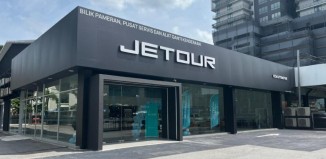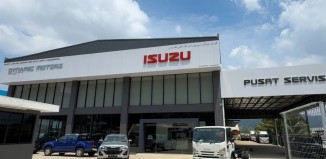Continental banks on Ethernet Technology for Vehicle Networking
Continental is laying the groundwork to launch series production of Internet-protocol-based control units and sees clear benefits compared with other networking standards. Following intensive development and validation of the technical possibilities and necessity of Ethernet networking in vehicles, international automotive supplier Continental is ready to deploy the technology in future vehicle generations.
To meet ever-growing in-vehicle communication requirements, Continental sees Ethernet technology as the ideal solution for vehicle networks. Thanks to unshielded, two-core, easy-to-install copper cables, the technology offers 100 megabits of bandwidth between all connected network nodes such as control units, antennas and sensors. The robust data transmission and its widespread use outside the automotive industry too are other factors in favor of this networking technology.
“We initially see an opportunity for using these unshielded Ethernet cables, which can be easily installed in vehicles, for Interior- and Chassis & Safety-related functions. This will enable us to cut overall vehicle costs while at the same time increasing the range of available functions. We can envisage Ethernet based predevelopment projects in all vehicle areas by 2020,” explained Helmut Matschi during the VDI Congress on “Electronics in vehicles” in Baden-Baden.
Ethernet technology allows components that have already proved their worth outside the automotive industry to be reused. In contrast to other, less widespread technologies, this offers clear cost benefits worldwide. Cost comparisons have been carried out in particular for the optical networking standard MOST (Media Oriented Systems Transport), a standard developed primarily for the transmission of multimedia data. These showed that Ethernet-based networks can cut costs by between 15% and 20%, taking into account not only the electrical components but also the cabling.
The use of Ethernet-based networks supports the ever-growing trend toward in-vehicle data transmission and communication between vehicles and the outside world. Bandwidth requirements for communication between control units will continue to increase too, which is why Continental now uses IP and Ethernet as an in-vehicle network layer and offers vehicle manufacturers a range of products that support this technology.
Continental is getting set to deliver IP- and Ethernet-based solutions and is planning to launch production in 2015.The heart of an IP-/Ethernet-based vehicle network is formed by the central nodes (Ethernet switches), which will be integrated in the infotainment systems and gateways offered by Continental.
The gateways act as interfaces with not only the diagnostics systems, which will in future support diagnosis via the IP (DoIP) standard, but also with conventional vehicle network technologies such as CAN, FlexRay and MOST. Continental sees clear benefits in gradually replacing these technologies – particularly MOST – in infotainment systems in order to achieve the aim of a standardized network layer.
This will help reduce complexity and make integration in the vehicle much easier. Continental has already developed one of the most important systems for seamless Ethernet communication in partnership with Kathrein: the intelligent antenna module. This unit contains antennas for wireless communication between vehicles and the infrastructure as well as antennas for the vehicle interior and associated transmission and reception electronics. All the data received in the module can be digitalized directly and sent to the relevant components via the IP-based network.
Even a 360-degree camera can be implemented in real time on the basis of IP technology. For Continental, Ethernet therefore represents another step toward achieving its vision of being “always on”. At the same time, this technology will allow the system integrator to not only fulfill the necessary networking requirements, but also cut overall costs.

























